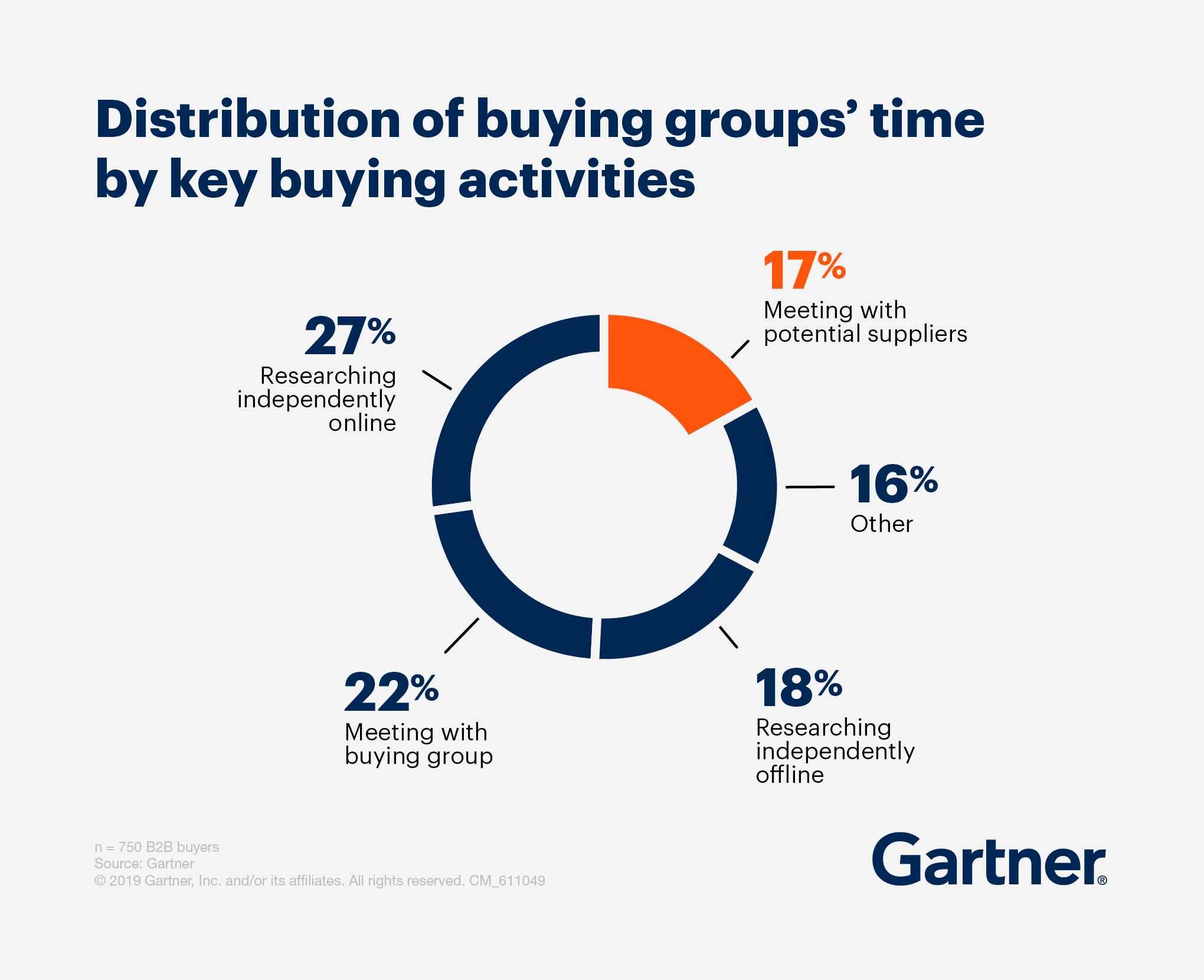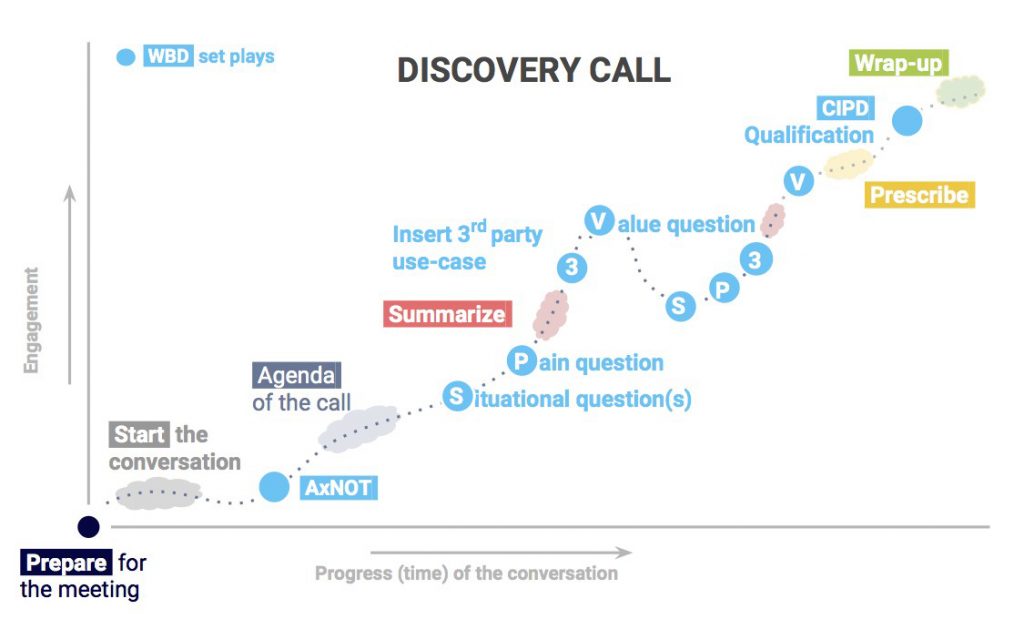Sales is the lifeblood of any business. Without sales, there is no revenue, and without revenue, there is no business.
As a salesperson, your main job is figuring out if what you're selling is something that the customer needs. The best way to do that is by asking the right sales discovery questions on your calls.
In this article, I’ll show you frameworks for asking discovery questions, examples of real discovery questions you can ask your leads, and the reasons they’re so effective.
Let’s dive in.
Discovery calls: A primer
The most critical thing to know about discovery calls is that they're all about your prospect and their needs.
In most cases, you’ll have sent your prospects a cold email or connected with them using LinkedIn prospecting, or made a personalized cold call. After a short conversation, they’ll book a meeting with you where you can start to learn more about their pain points.
A sales discovery call isn’t a chance for you to pitch your product or service. Remember – people like buying and having someone solve their pain points, but in general, people don’t want to feel like they’re being actively sold to.
When approaching your sales calls, switch your mindset from "How can I sell my product?" to "How can my product help this person?" and you'll be on the right track to close more leads.
Consider sales calls as a filtering process. Good salespeople separate the people who need their product from those who don't. The best salespeople are able to do this without wasting anyone's time – they know that not everyone is a potential customer, and they're okay with that.
You will notice that the sales discovery questions we’re going to look at are all open-ended. That's intentional because the goal of each question is to get your prospect talking. The more they talk, the more information you'll have to work with.
Considering a B2B buyer only spends 17% of the buying process actually talking to you, it’s vital you use that time to learn as much as you can about their pain points and how you can help them solve them.

When you ask 'yes or no' questions, you're putting pressure on the prospect to answer in a certain way. And that often leads to them either:
- Giving you the answer they think you want to hear, or,
- Giving you the answer you didn’t want to hear, then not elaborating.
Naturally, neither of those outcomes is ideal. You want the prospect to open up to you and share what they're really thinking about their pain points, sales objections, and how your product or service might fit in.
In sales lingo, we say that good sales discovery questions "move the needle" because they help you move the needle closer to a sale. By asking the right questions, you can find out whether the prospect is a good fit for your product or not. If they're not, it's best to move on and focus your energy on someone who is more likely to buy from you.
Let's take a look at some examples of discovery questions that'll help you move the needle.
4 frameworks and 17 examples of sales discovery questions
The best sales discovery questions are the ones that help you understand four things:
- The problem your prospect is facing
- The size of their problem
- Can your product or service solve the problem?
- Their decision-making process
You can think of the discovery process as a funnel. It starts with general questions about the prospect's business and their needs.
As the conversation progresses, the questions get more specific.
As part of this funnel, you’ll ask specific questions to uncover valuable insights into your prospect.

By the end of the call, you should have a clear picture of your potential customer's situation. And you can use that to figure out whether your product is a good fit for them.
A sales discovery call is a journey. It takes the prospect from where they are now to where they want to be. The goal is to find out whether your product can help them get there.
Each stage has its own questions that need to be answered. Here's a look at them.
1. Understand the problem the prospect is facing
The first step in any sale is understanding what problem the prospect is trying to solve. And the best way to do that is to ask them about it directly. Here are some sales discovery questions that'll help you understand the problem they are facing:
- What challenges are you currently facing in your business?
- How does that make you feel?
- Can you walk me through what that looks like?
- What impact is that problem having on your business?
- Who does this problem affect most at your company?
Asking these types of questions will help you understand not just what the problem is but also how it's impacting the prospect.
For example, let's say you're selling an invoice processing system. A prospect tells you that they're struggling to keep track of their invoices. On the surface, that's the problem they're facing.
But, if you dig a little deeper, you might find out that because they can't keep track of their invoices, they often end up missing payments because their accounting team can’t keep track of hundreds of manual invoices. An invoice OCR software could help, but the late payments are impacting their business's cash flow.
Now you know that the problem isn't just that they can't keep track of their invoices. It's that missing payments are causing cash flow problems. That's the true pain point they're experiencing. This means you can enter the next stage of the sales process and the next parts of the discovery call with better information to work with.
2. The size of the problem
Once you understand the problem the prospect is facing, it's time to start digging into how big of a problem it is for them. The size of the problem can have a big impact on whether the prospect is going to buy your product and how much they’ll be willing to spend on solving it.
If the problem is big enough, the prospect will be motivated to find a solution. But, if the problem isn't that big of a deal, they'll probably stick with their current solution.
Here are some questions that'll help you understand the size of the problem:
- How long have you been dealing with this problem?
- How much does it cost you (in time, money, etc.)?
- What other areas of your business are being affected by this problem?
- How urgently do you need to find a solution?
These questions will give you a better idea of how big of an issue the problem is for the prospect and how motivated they are to find a solution.
The main challenge at this stage is that most prospects think their current solution is good enough. For example, let's say you're selling a CRM platform. The prospect is currently using a simple Excel spreadsheet to track their leads and customer relationships. It's not ideal, but it works.
From their perspective, they might think they don't need anything more than that. They are getting from point A to point B. In their eyes, they are managing their sales pipeline effectively. But from your perspective, you know that their current solution isn't going to cut it in the long run, and they could see benefits across their business with a dedicated tool.
That's why it's important to not just focus on the problem but also on the long-term impact of that problem. What might happen if the prospect doesn't find a solution?
Asking questions like, "What would happen if this problem is not solved?" or "What's the worst case scenario?" will help you paint a picture of the long-term consequences of the problem and show the prospect that they need to take action.
3. Can your product or service help solve the problem?
Here is where you ask sales discovery questions to figure out whether your product or service can actually help your prospect. There's nuance in this. Your solution might be perfect from a theoretical standpoint, but your prospect could not be in the position to put it in place.
Here are some questions that will help you and your prospect figure out whether your solution is workable:
- How much are you willing to invest in solving this problem?
- Do you have the internal resources to implement a solution?
- What's the timeline for finding and implementing a solution?
These questions will help you understand whether your prospect is able to take action and how quickly.
You can ask questions about the current solution to see if there are any roadblocks to implementation. For example, if you're selling a new marketing automation tool, you might ask the prospect whether they're happy with their current tool.
If they're not, you can ask why and see if there are any specific features that are preventing them from switching. Once you identify those roadblocks, you can position your product as a solution.
If they tell you their timeline is one to three months, you know you have a good chance of closing the deal if they see the benefits. If they tell you they’re considering this as a six-month project, you know you can nurture them during that time and make sure your brand is still top of mind when they come to make their decision.
4. The decision-making process
After you've established that there's a problem and that your product can solve it, the next step is to understand the decision-making process.
Who's involved in making the decision to invest in a new solution?
You'll need to tailor your sales deck to the different stakeholders, each of who will have their own set of questions and concerns.
Here are some questions that'll help you understand the decision-making process:
- Who's involved in making this decision?
- What is each decision-maker's role?
- What are their primary concerns about this decision?
- What criteria are they going to use to evaluate solutions?
- What's the timeline for making a decision?
Once you have this information, you can start to tailor your pitch. You'll know who you need to talk to, what their concerns are, and what criteria they're going to use to evaluate solutions.
For example, the company’s CEO will have different concerns than their sales development reps, sales, or their CFO. By learning what each person cares about, you can adapt your pitch and position your solution as the best possible fit for their needs.
Ask targeted sales discovery questions to improve sales performance
The best salespeople are always asking questions. They're constantly gathering information and improving their understanding of their prospect's needs.
Asking targeted sales discovery questions is a great way to improve your sales performance. By spending time understanding your prospect's pain points, you can position your product or service as the perfect solution to that. And, by extension, close more leads.
As well as helping you close more deals, asking targeted sales discovery questions is an excellent way to save time and effort – the questions will instantly reveal who is actually interested and qualified to buy from you.
Using the examples we’ve given you, it won’t be long before you start to see the tangible results in your sales process.
Let’s stay in touch!
Subscribe to GetAccept’s monthly newsletter packed with sales trends and tips, product releases, invitations to special events and webinars — and more! Zero spam. Unsubscribe at any time.




